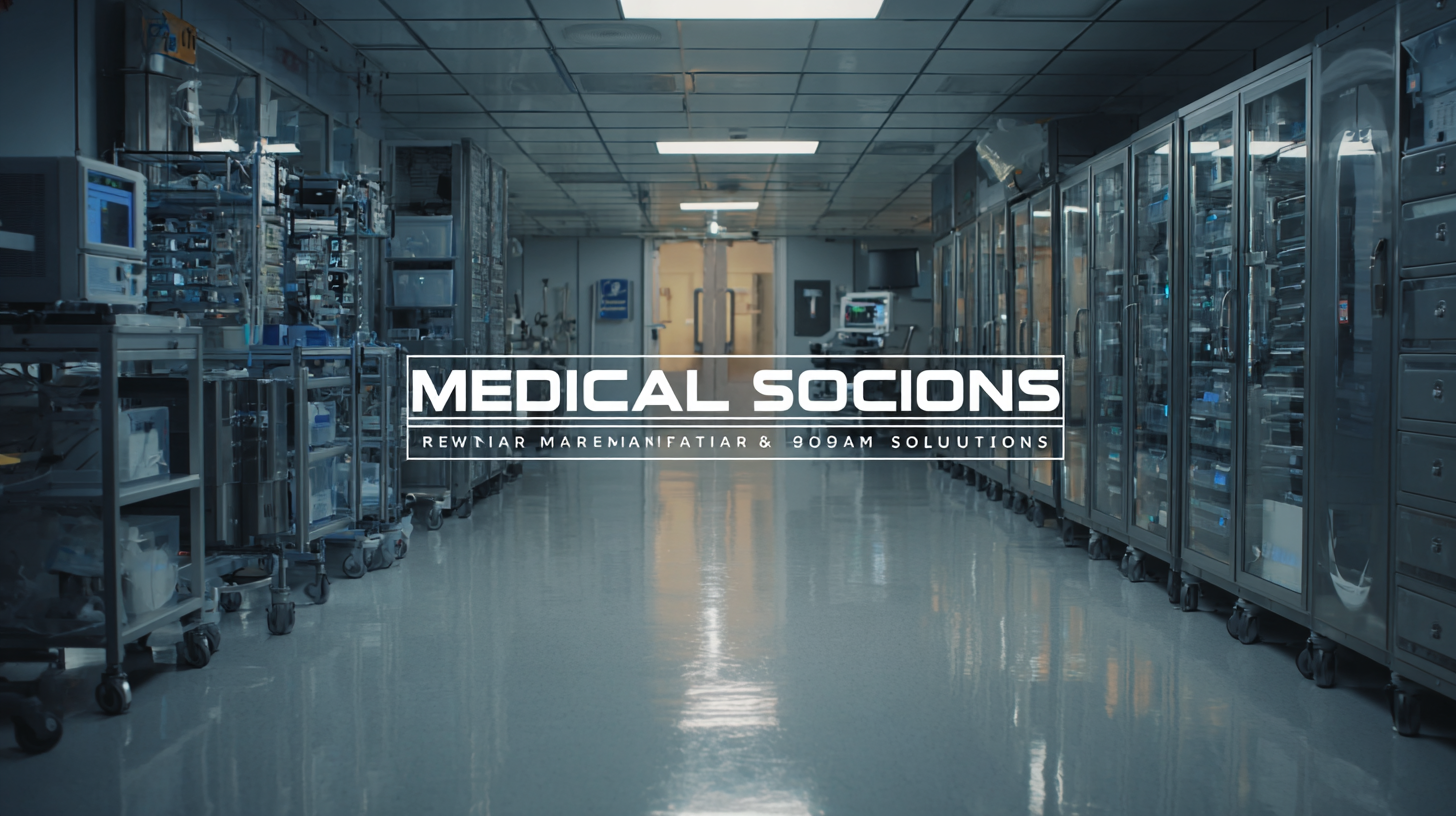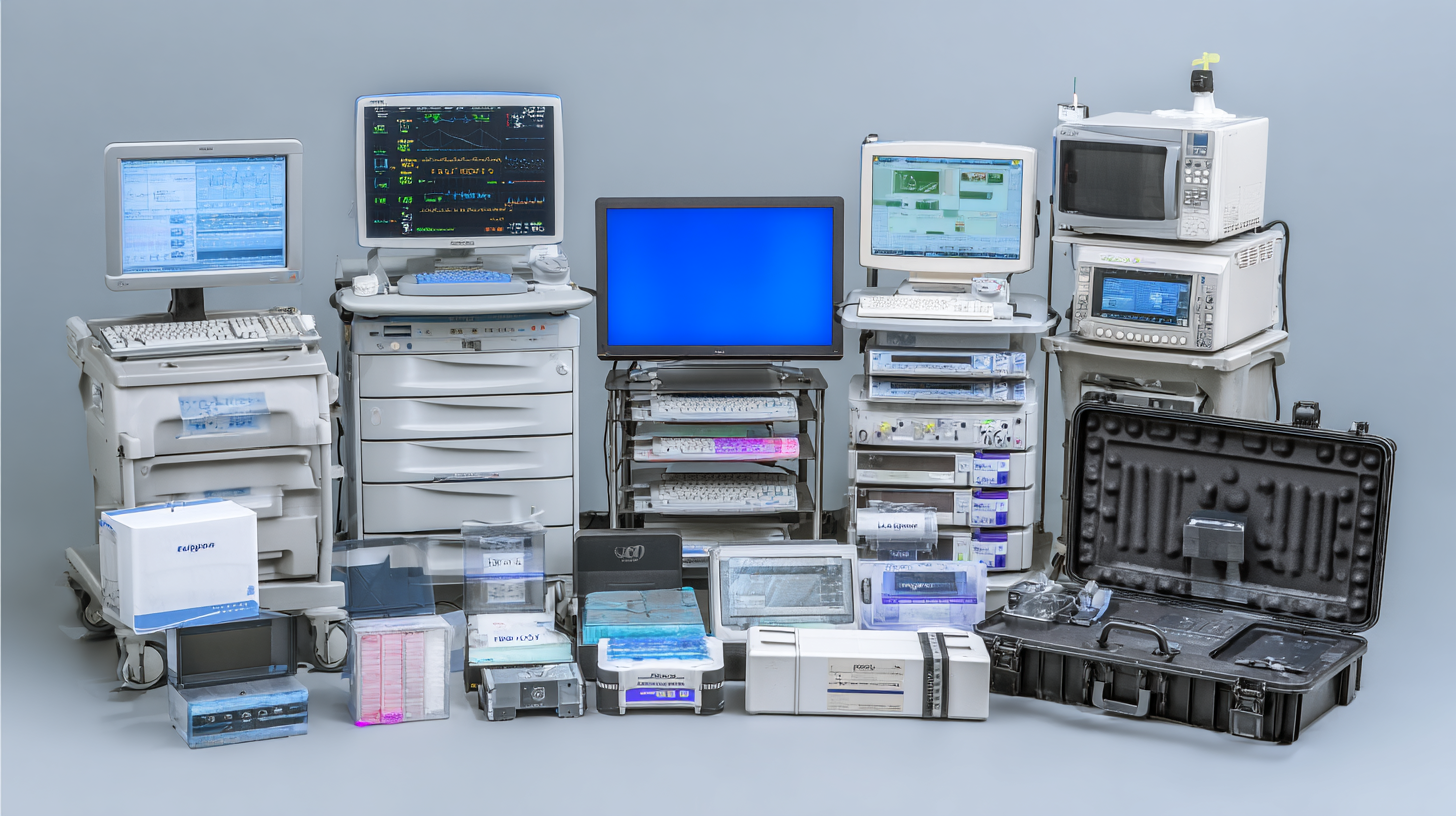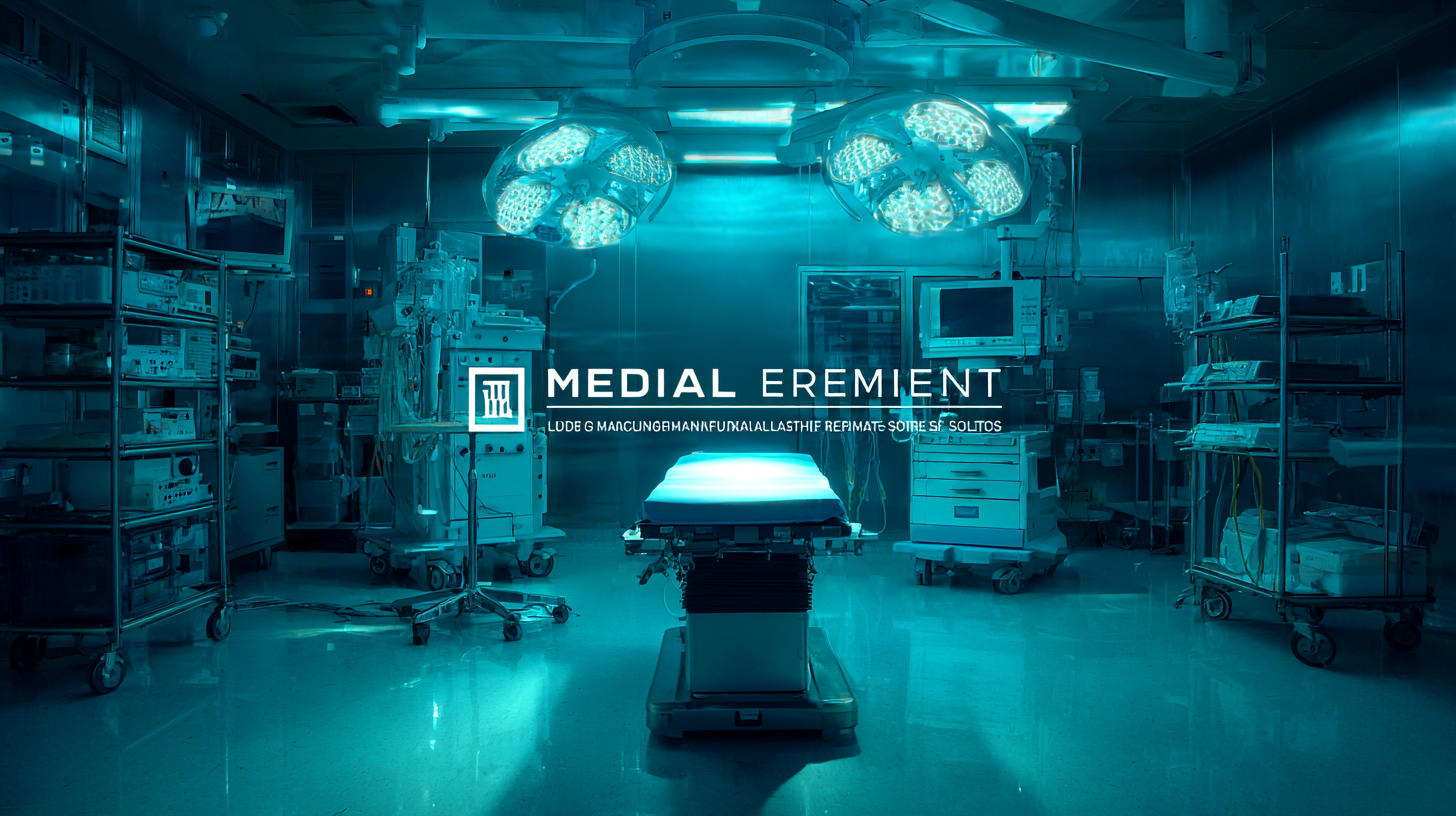Click here to browse our On The Mend Portfolio!
Leading Global Manufacturer of Best Medical Equipment Rental Solutions
In the rapidly evolving landscape of healthcare, the demand for cost-effective and flexible solutions has shifted significantly towards Medical Equipment Rental services. According to a report by Grand View Research, the global medical equipment rental market is expected to reach USD 16.32 billion by 2025, highlighting an increasing trend among healthcare facilities to opt for rental over outright purchase. This shift not only alleviates the financial burden associated with acquiring costly medical equipment but also ensures that hospitals and clinics have access to the latest technologies without the constraints of maintenance and depreciation. Furthermore, the benefits of Medical Equipment Rental extend beyond financial savings; they enhance operational efficiency and improve patient care quality by providing timely access to necessary tools. As healthcare providers continue to navigate the complexities of modern medicine, understanding the multifaceted advantages of Medical Equipment Rental will be crucial in optimizing care delivery and maximizing resource utilization.

Understanding Medical Equipment Rental Solutions: A Comprehensive Guide
Understanding medical equipment rental solutions is essential for healthcare providers looking to optimize their resources. According to a recent report by Grand View Research, the global medical equipment rental market is expected to reach USD 202 billion by 2027, growing at a CAGR of 9.6%. This rise is driven by increasing healthcare expenditures and the growing demand for cost-effective solutions, particularly in a post-pandemic world where hospitals and clinics face heightened financial pressures.
When considering medical equipment rental, it’s crucial to assess the specific needs of your facility. Factors such as equipment type, duration of use, and patient volume play a significant role in making informed decisions. Here are a couple of important tips: First, establish a clear budget to avoid overspending on unnecessary rentals; second, prioritize vendors with robust customer support and maintenance services, as timely technical assistance can prevent operational downtimes.
Moreover, partnering with leading manufacturers can enhance the quality of equipment available for rent. Industry leaders often provide the latest technologies and regular updates, ensuring healthcare providers have access to advanced solutions. As the medical equipment rental sector evolves, staying informed on trends and best practices will help institutions navigate this landscape effectively.
The Advantages of Renting Medical Equipment vs. Purchasing
When considering the acquisition of medical equipment, healthcare providers often face the dilemma of renting versus purchasing. Renting medical equipment offers a multitude of advantages that can significantly enhance operational efficiency while reducing costs. One of the primary benefits is the financial flexibility it provides. By renting, institutions can avoid the substantial upfront costs associated with purchasing, allowing them to allocate their budgets towards other critical areas of patient care and operational needs.
Moreover, renting medical equipment ensures access to the latest technology without the burden of obsolescence. As advancements in medical technology occur rapidly, healthcare facilities can easily update or swap out rented equipment for newer models as necessary. This not only improves patient outcomes through the use of cutting-edge tools but also alleviates concerns over maintenance and repair costs, which are typically covered by rental agreements. Ultimately, the decision to rent rather than purchase medical equipment presents a strategic approach for healthcare providers looking to maximize both efficiency and value in their operations.
Advantages of Renting Medical Equipment vs. Purchasing
How to Choose the Right Medical Equipment Rental Provider
When selecting a medical equipment rental provider, several key factors should be considered to ensure you receive the best service and equipment for your needs. As the medical equipment rental market continues to expand, it is projected to reach approximately $7.5 billion by 2031, growing at a compound annual growth rate (CAGR) of 10.44% from 2024. This significant growth reflects the increasing demand for accessible healthcare solutions and highlights the importance of partnering with a reputable provider.

One crucial aspect is the variety and quality of equipment offered. A leading provider should have a comprehensive inventory that includes everything from diagnostic machines to mobility aids, ensuring that healthcare facilities can find what they need without delay. Furthermore, recent reports indicate that financial leasing in the medical sector is also on the rise, with an expected CAGR of 8.89% from 2024 to 2032. This trend emphasizes the necessity for providers to offer flexible rental and financing terms to accommodate healthcare facilities' financial constraints.
In addition, customer service and support are paramount. Providers should offer responsive support to assist clients with any inquiries or equipment issues promptly. This dedication to service can significantly enhance the user experience and ensure that healthcare practitioners have uninterrupted access to the medical equipment essential for patient care.
Best Practices for Managing Medical Equipment Rentals in Healthcare
As the global healthcare market continues to expand, efficient management of medical equipment rentals has become crucial. With a projected growth in the healthcare tourism market from $39.84 billion in 2023 to $98.61 billion by 2031, healthcare providers are increasingly relying on optimized rental solutions to meet rising demands. Implementing best practices in medical equipment rentals can significantly enhance operational efficiency, reduce costs, and ensure compliance with stringent regulations.
One essential practice is the adoption of integrated inventory management systems that allow healthcare providers to track and manage their equipment seamlessly. Such systems not only facilitate real-time visibility into equipment availability but also streamline maintenance schedules, ensuring that all rental equipment is in optimal condition when needed. Furthermore, establishing strong partnerships with reliable rental service providers can foster better compliance and sustainability, thereby contributing to improved patient care outcomes and overall service quality in the healthcare sector.
Leading Global Manufacturer of Best Medical Equipment Rental Solutions
| Equipment Type | Rental Rate (per month) | Maintenance Frequency | Average Lifespan (years) | Usage Rate (%) |
|---|---|---|---|---|
| Infusion Pumps | $350 | Monthly | 5 | 90 |
| Patient Monitors | $500 | Quarterly | 7 | 80 |
| Wheelchairs | $150 | Bi-Annual | 15 | 75 |
| CT Scanners | $2,000 | Monthly | 10 | 70 |
| X-ray Machines | $1,500 | Monthly | 8 | 65 |
Key Considerations for Integrating Rental Solutions in Medical Facilities
Integrating rental solutions within medical facilities can greatly enhance operational efficiency and cost-effectiveness. As healthcare demands rise, especially during unprecedented times, facilities are increasingly looking for flexible options to obtain essential medical equipment without the burden of large capital expenditures. By opting for rental solutions, hospitals and clinics can access state-of-the-art equipment that often includes the latest technology, while also ensuring that they are not tied down by long-term commitments.
Key considerations include evaluating the types of equipment required based on patient volume and specific medical needs. Facilities must assess the rental terms and conditions, including maintenance and support services, to ensure that they can swiftly address any operational issues that may arise. Additionally, understanding the market dynamics and establishing a relationship with a reliable rental service provider can foster a seamless integration process, ultimately leading to enhanced patient care and clinical outcomes.

View Products
- Bathroom Safety & Shower Systems
- Canes, Knee Walkers, Rollators & Wheelchairs
- Compression Socks, Stockings & Custom Garments
- CPAP Machines, Devices, Accessories & Supplies
- Incontinence Supplies
- Lift, Reclining, and Sleeper Chairs
- Power Scooters, Power Chairs & Accessories
- Ramps & Handicap Access
- Stair, Platform & Portable Lifts
- Blog
Our Locations
Visit Us in CT, NY & CA
Looking for a 'medical store near me'? Call On The Mend for the equipment and service you need!
